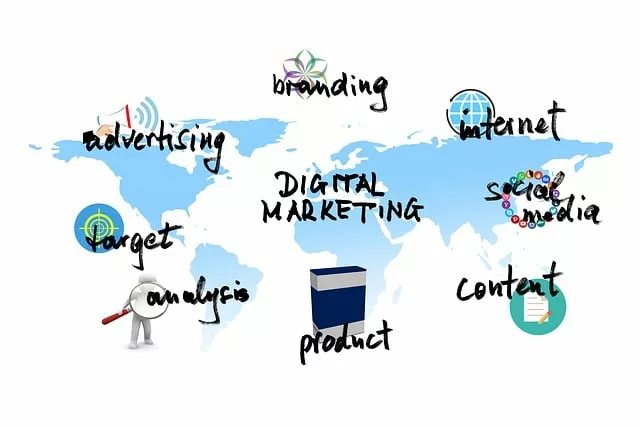In affiliate marketing, one of the earliest decisions you will face is whether to rely on free tools and learning materials or invest in premium resources. While the temptation to cut costs is strong, especially when you are starting, the right investment at the right time can accelerate your progress and open doors that free resources simply cannot.
For beginners, this is more than a financial choice. It is a strategic decision about where to focus energy, time, and effort. A well-chosen paid tool or program can dramatically shorten your learning curve. On the other hand, spending too early without a clear plan can drain your budget without yielding results.
This balance between free and paid options is not unique to affiliate marketing, but the competitive nature of the industry makes it more urgent. When hundreds of affiliates compete for the same audience, those who learn faster, adapt more effectively, and work smarter often emerge as leaders.
Understanding the Value of Free Resources
Free resources in affiliate marketing are everywhere. Blogs, YouTube tutorials, podcasts, free webinars, and beginner’s guides all promise to help you learn the basics. Platforms like Wealthy Affiliate even offer free starter memberships that allow you to build a basic website and access entry-level training modules.
The appeal of free resources lies in their accessibility. You can explore a topic without financial risk, test whether you enjoy the work, and get a feel for the industry before committing money. This is especially useful for absolute beginners who are unsure if affiliate marketing suits their skills and lifestyle.
However, free does not always mean low quality. Many well-known marketers produce free content as part of their brand strategy, and some of it is exceptional. The challenge is that free content often lacks structure. You may end up piecing together scattered advice from multiple sources, which can lead to confusion or conflicting strategies.
Free resources often focus on attracting newcomers, which results in covering the same surface-level topics repeatedly. You might learn what affiliate marketing is and how to choose a niche, but advanced tactics, case studies, and technical details are usually reserved for paid programs.

The Limitations of Relying Only on Free Resources
While you can start learning without spending money, staying in the free zone indefinitely limits your growth. Here’s why:
1. Lack of depth.
Free resources often fail to delve deeply into data-driven strategies, advanced SEO, conversion optimization, or paid advertising techniques. These are the areas that usually separate hobbyists from full-time affiliates.
2. Outdated information.
Affiliate marketing changes quickly. Algorithms update, consumer behavior shifts, and new tools emerge. Free content may not be updated regularly, leaving you with obsolete tactics.
3. No direct mentorship.
Without access to expert feedback, you may spend months making avoidable mistakes. Paid programs often include coaching or community support that can pinpoint precisely where you are going wrong.
4. Limited access to premium tools.
Some of the most powerful keyword research, tracking, and analytics tools operate on a paid subscription model. Without them, you are operating with incomplete data.
The Role of Paid Resources in Affiliate Marketing
Paid resources exist to bridge the gap between fundamental understanding and consistent profitability. This can include training programs, software subscriptions, content creation tools, and professional services.
For example, Wealthy Affiliate’s premium membership offers advanced SEO training, unlimited website hosting, detailed keyword research tools, and access to an active online community. The difference between Wealthy Affiliate’s free vs paid membership lies not just in the amount of content but in the quality of tools and support you gain access to.
Paid resources save you time by providing step-by-step processes, proven strategies, and ready-to-use templates. They can also help you avoid trial-and-error approaches that cost more in the long run.

How to Decide When to Invest
The decision to upgrade from free to paid should not be impulsive. Here are some considerations:
Assess your goals.
If your goal is to earn a full-time income, you will eventually need to invest in better tools and training. If your goal is to learn casually or promote a single small project, you may be able to stay with free options longer.
Measure your progress.
If you find yourself stuck or unable to scale despite consistent effort, it may be time to invest. Paid resources often provide solutions to bottlenecks you cannot overcome alone.
Consider your budget.
Investing in paid tools should be a strategic decision, not a reckless one. Start with essentials that deliver the highest return on investment, such as keyword research software or a professional website theme.
Evaluate the provider’s track record.
Not all paid programs are worth the price. Look for transparent results, positive reviews, and a history of updates. This is why platforms like Wealthy Affiliate stand out—they have a long record of training successful affiliates.
Examples of Free and Paid Tools
To illustrate the difference, here are some examples of what you might use in each category:
Free Tools:
- Google Keyword Planner for basic keyword research
- Canva’s free version for creating simple graphics
- WordPress with a free theme for website building
- Free analytics through Google Analytics
- Free trials of SEO tools like Ubersuggest
Paid Tools:
- Semrush or Ahrefs for advanced keyword and backlink data
- Canva Pro for premium templates and brand kits
- Premium WordPress themes like GeneratePress or Astra Pro
- Email marketing services like ConvertKit or ActiveCampaign
- Wealthy Affiliate premium membership for advanced training and hosting
When Free Is Enough
Free resources are often enough during your initial learning phase. For example, suppose you are in your first month of affiliate marketing and still exploring niches, writing sample blog posts, and learning how to install plugins. In that case, you can make significant progress with free tools and guidance.
At this stage, your main investment is time. You are developing the habit of creating content, learning how search engines work, and understanding your audience. Paid tools at this point may overwhelm you with advanced features you are not ready to use.

When Paid Becomes Essential
As your site grows, your needs change. You may want to compete for more competitive keywords, improve your site’s speed, or run split tests on your landing pages. Free tools may not provide the precision or depth necessary to optimize these elements effectively.
For example, you may start with Google Keyword Planner. Still, once you are serious about ranking for high-value search terms, you will find that paid keyword tools offer more accurate traffic data, competitor insights, and trend analysis.
Similarly, while you can host a website on a free plan, upgrading to premium hosting improves performance, security, and scalability. In affiliate marketing, even minor improvements in load speed or uptime can translate into higher earnings.
Avoiding the Trap of Over-Investing
Investing in paid resources too early or in too many tools at once can be a costly mistake. The key is to upgrade gradually, focusing on tools and programs that directly support your current goals.
For instance, investing in a high-end email marketing platform before building an established audience is a waste of money. A better approach is to start with free or low-cost tools and upgrade only when you reach the limits of what they can do.
Paid resources should solve a specific problem you are facing, whether it is a lack of traffic, low conversions, or inefficient workflow.
Wealthy Affiliate Free vs Paid: A Practical Breakdown
Wealthy Affiliate offers both a free starter membership and a paid premium membership. The free option provides a taste of the platform, including limited training modules, a couple of websites hosted on free subdomains, and access to a portion of the community.
The premium membership unlocks everything: unlimited websites on your domains, full access to hundreds of training courses, live weekly webinars, advanced keyword research tools, and 24/7 support from the community and expert coaches.
For beginners, the free version is a low-risk way to learn the basics and determine if the teaching style suits you. As soon as you decide to commit seriously, upgrading to premium gives you the tools and guidance to scale.
In short, the free plan is an introduction. The paid plan is a complete career-building platform. Knowing when to make that leap depends on your commitment, goals, and readiness to act on advanced strategies.
Making the Right Call for Your Business
The transition from free to paid resources should feel like a natural next step, not a forced decision. If you consistently encounter limitations, whether it’s a lack of advanced keyword data, insufficient hosting power, or a need for personalized guidance, it is time to invest.
A savvy affiliate marketer views paid resources not as expenses, but as business investments. The right tool or program should pay for itself through improved efficiency, higher rankings, or better conversions.
Whether you start with Wealthy Affiliate’s free vs paid membership, invest in a high-quality theme, or subscribe to a powerful SEO platform, the key is to align every purchase with a specific goal and measurable outcome.
By doing so, you position yourself for steady growth, avoid wasted spending, and ensure each investment contributes to building a sustainable affiliate business.

